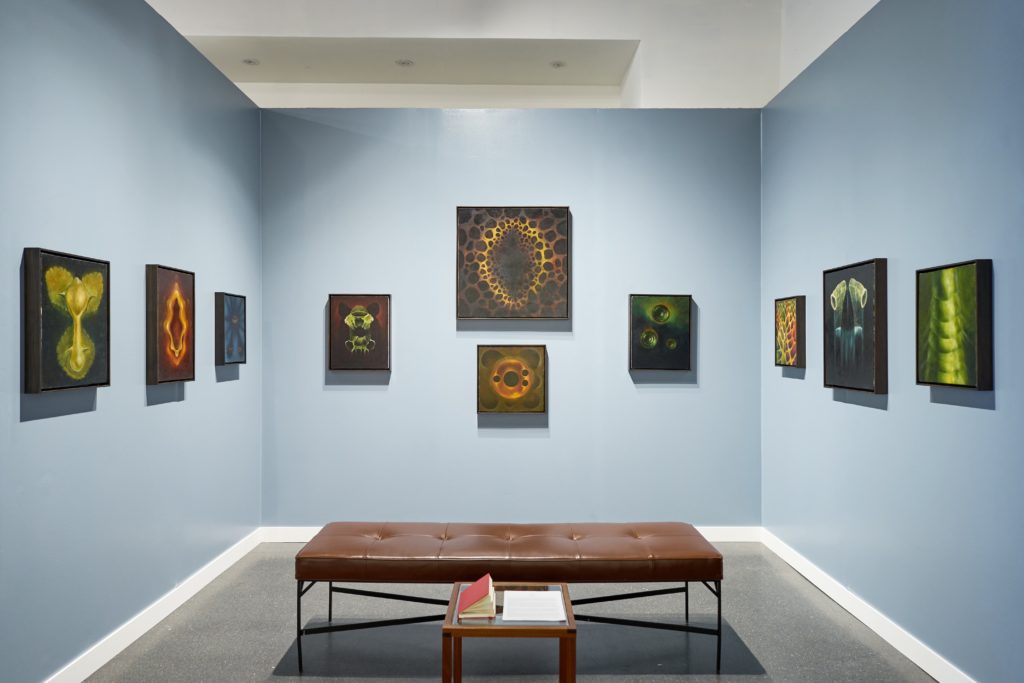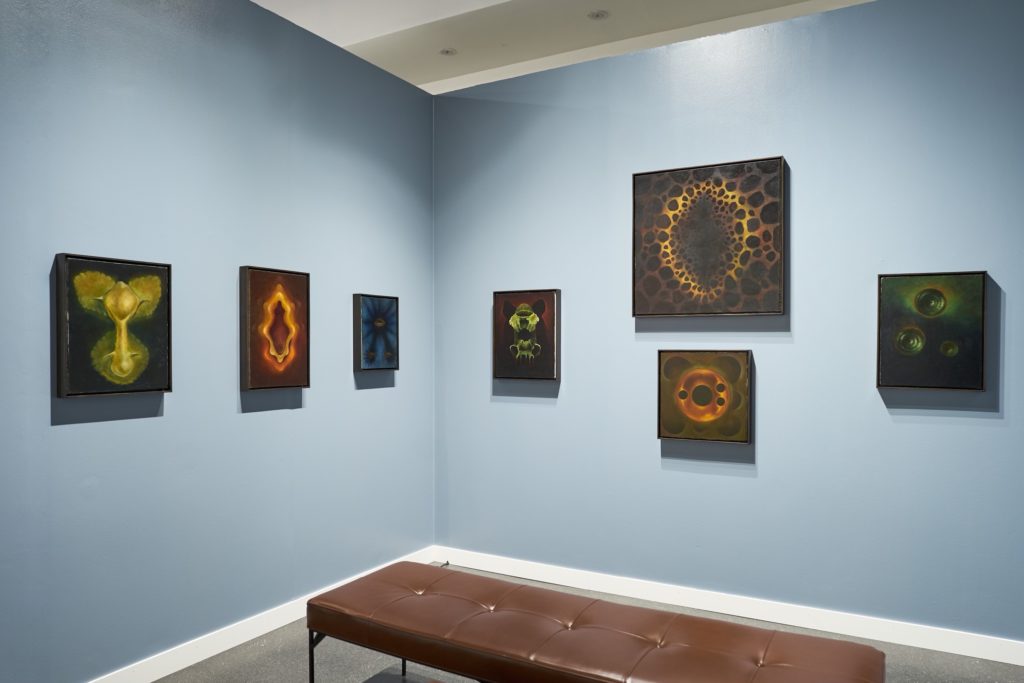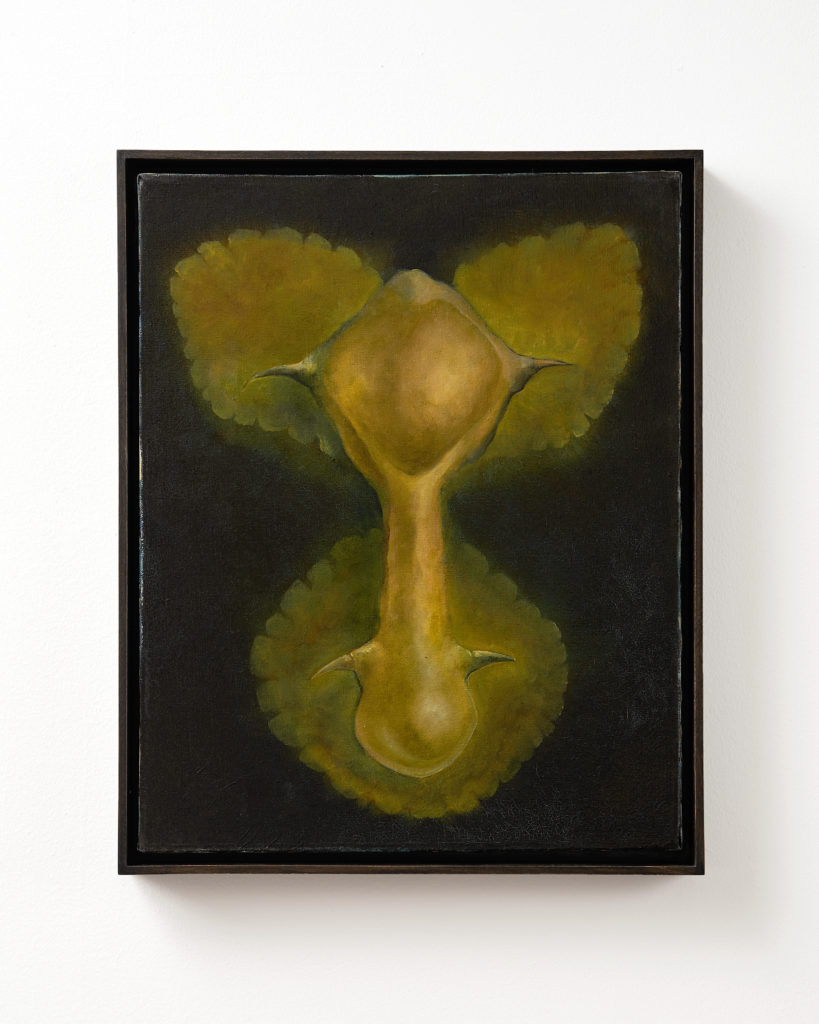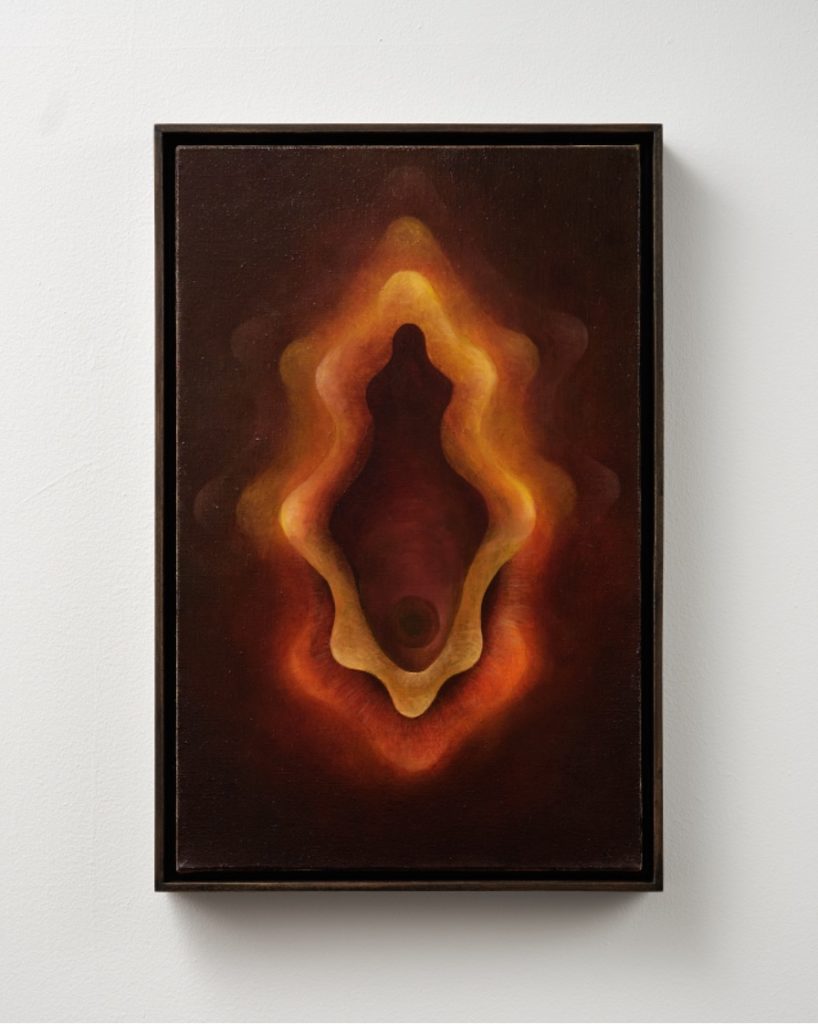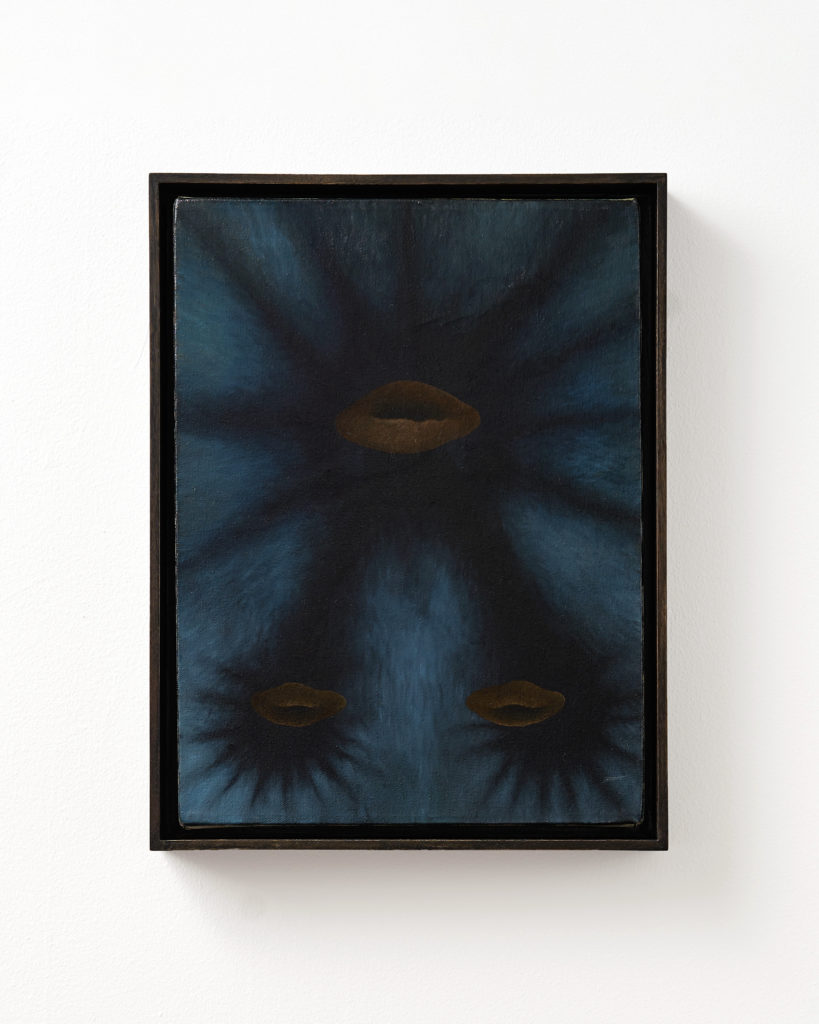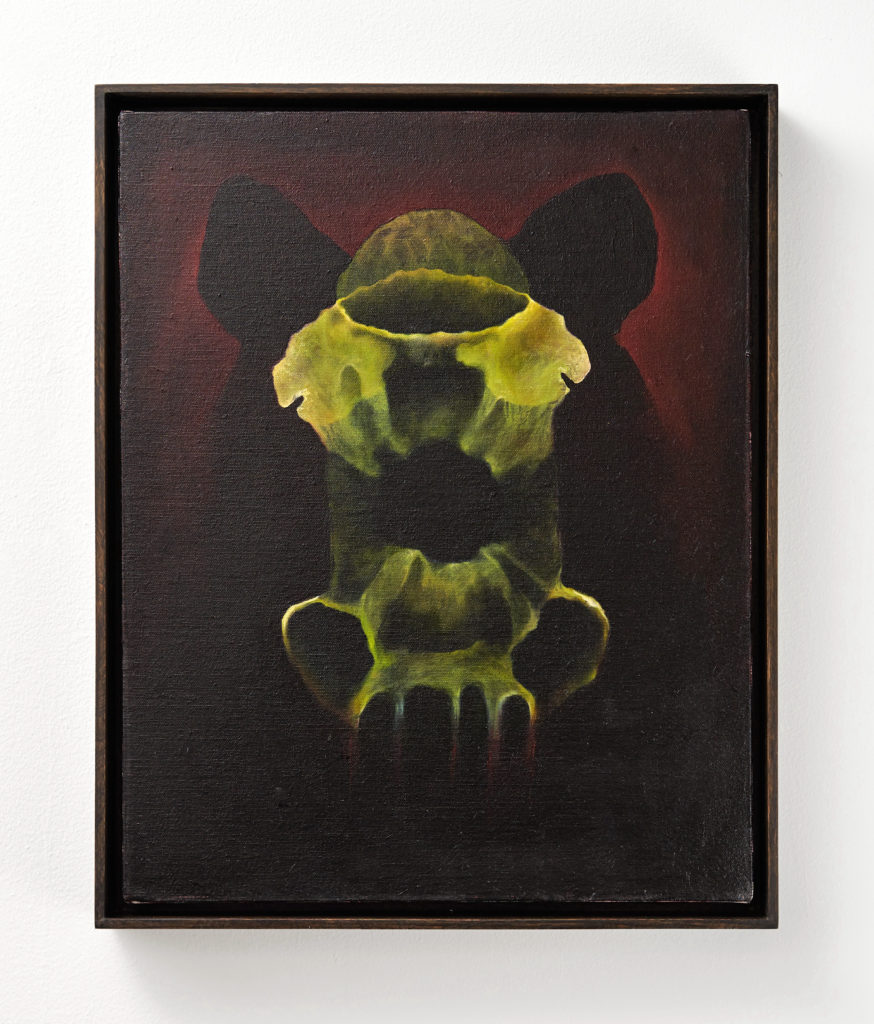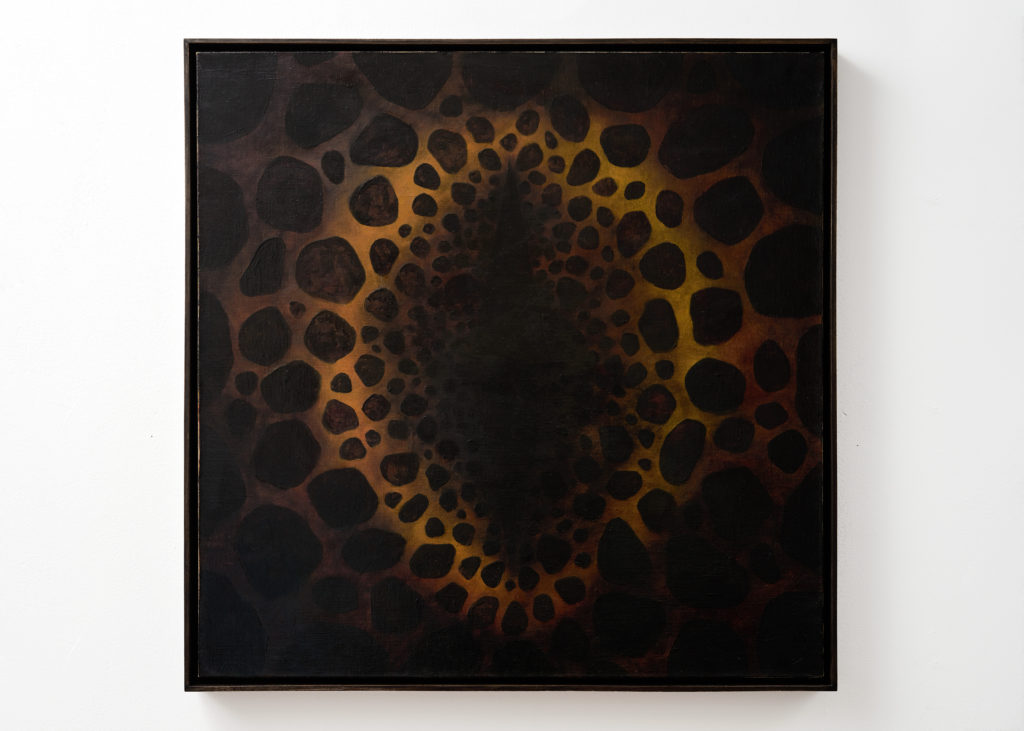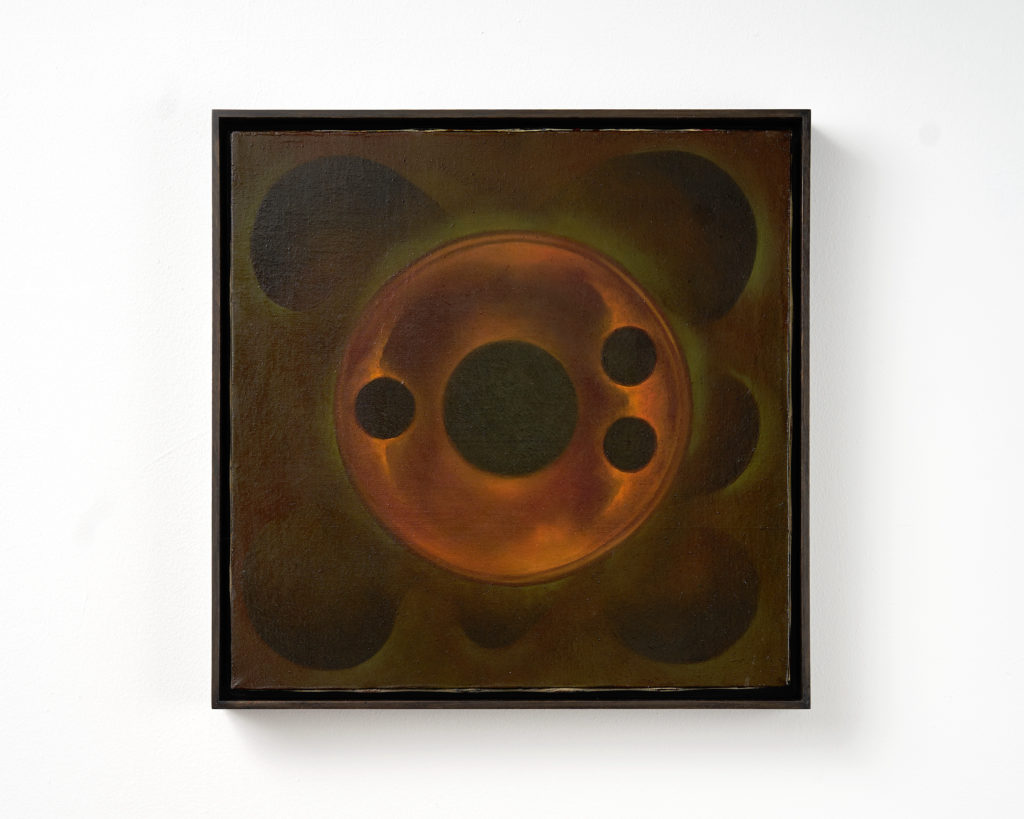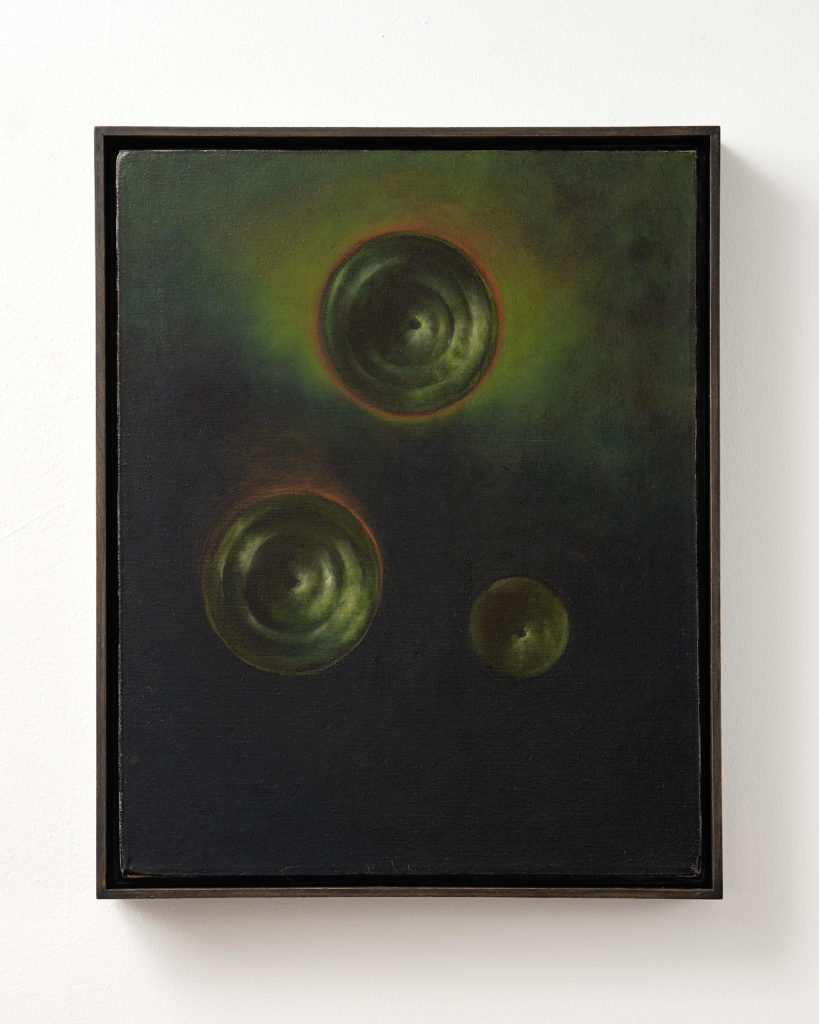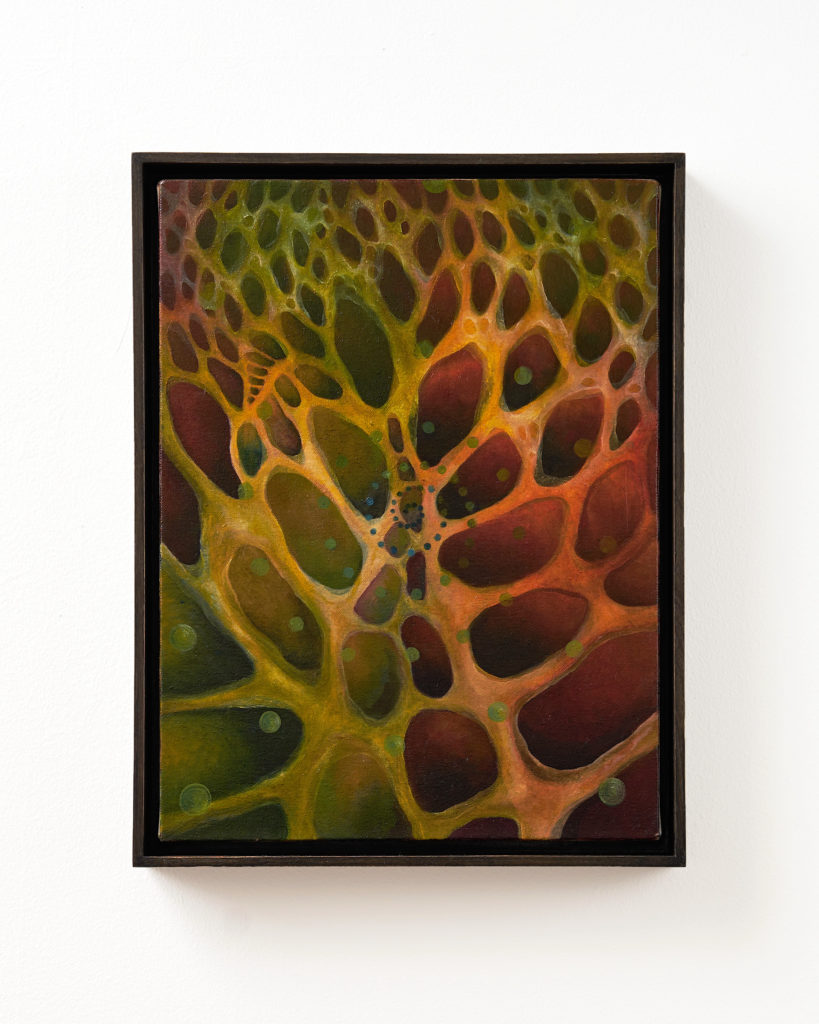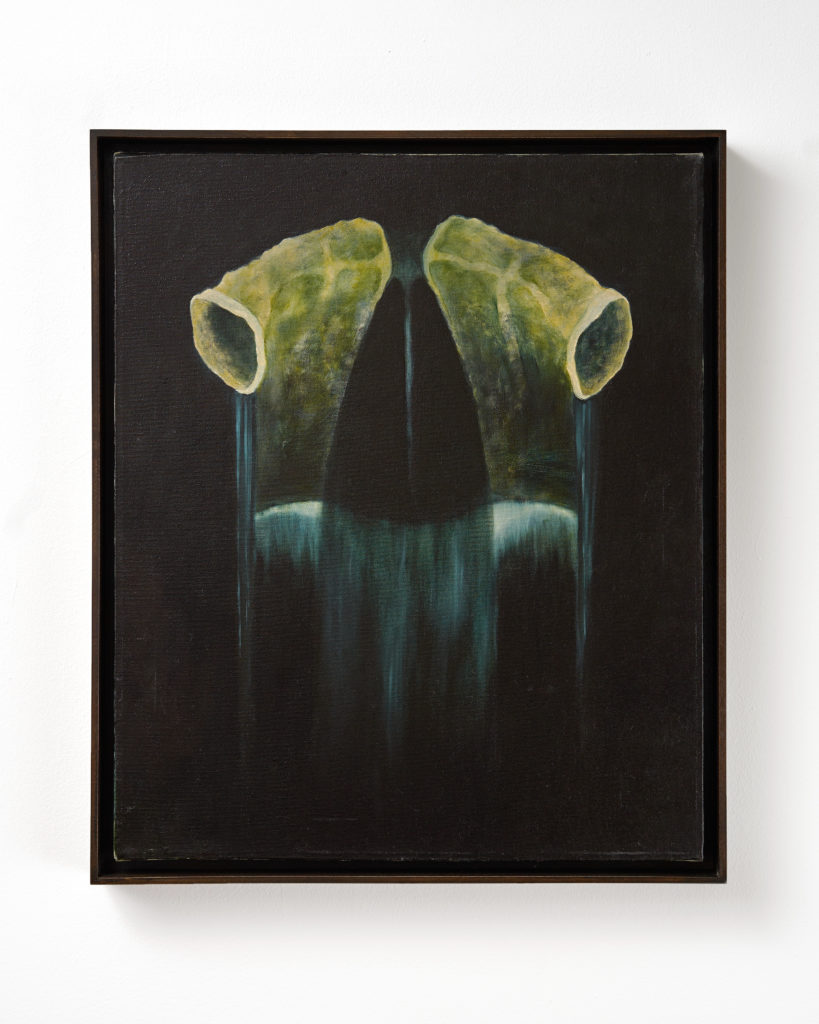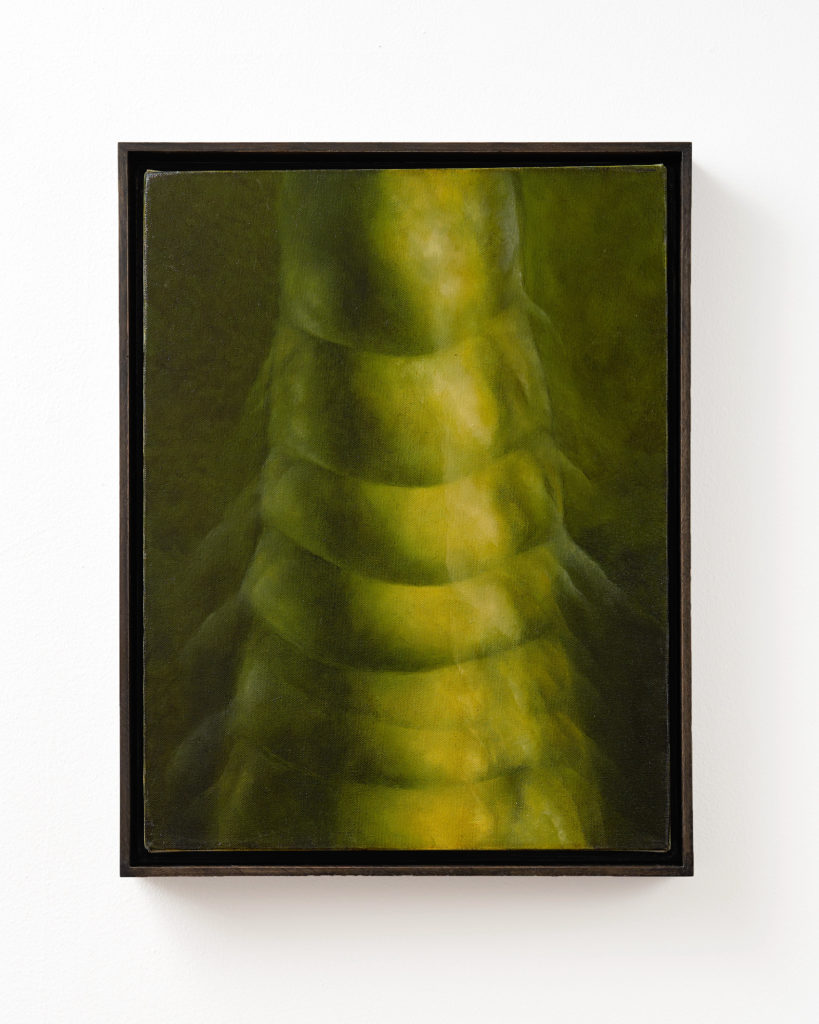Independent Art Fair
Mette Madsen
May 11–May 14, 2023
STARS is delighted to present a series of paintings from 1990–2005 by Mette Madsen at the Independent art fair.
Using long brushes, Mette Madsen sat at a distance from her canvas painting forms that glow in the dark. Even when they lack a face, and they most often do, we recognize her forms as alive. They could be underwater, under a microscope, inside the human body, in a cave, in space, or in the night’s sky. Many organisms are capable of making their own light, the most common colors of which are green and blue. Madsen leaned on yellow-green and a spectrum of gold-to-red, a palette of human fluids like snot, piss, and blood. Bioluminescence occurs when two chemicals react, yielding an unstable energy compound that is released as light. In plants and animals, this process is considered “an evolutionary miracle” and it serves a variety of purposes from attraction to evasion, communication, and seeing, searching in the dark…
Although social, a beloved scene member and friend, Madsen made her art in isolation. She rarely discussed her practice with any of her surviving intimates, all of whom were artists or art-adjacent. Madsen had been part of the storied East Village art scene of the 1980s and had exhibited then, most frequently at Colin de Land’s Vox Populi, in 1984 and 1985, before he renamed his gallery American Fine Arts Co. That scene privileged its male artists, including Madsen’s on-and-off again boyfriend, the once-famous Richard Hambleton, who she would accompany and assist as he smeared shadows in the streets of New York. Like de Land, the gallerist Hudson curated a diverse program; it was at his space Feature Inc. that Madsen showed last, in 1994. A selection of her “Torso” paintings of cut-up pinup silhouettes were among a large group show titled Sparkalepsy. One year earlier, in 1993, Madsen had moved her studio and apartment from SoHo’s Greene Street to a Victorian-era building on the Bowery, also a home to, over the years, the artists June Leaf, Robert Frank and Scott Covert; actress Jessica Lange; and Madsen’s close friends, the filmmakers Sara Driver and Jim Jarmusch (it’s also where Yoko Ono made her 1970 film Fly). This is where the majority of the work on view here were made.
Madsen had renovated her second-floor unit in the Bowery building with reclaimed wood including two pillars recovered from a Staten Island Ferry that had burned down. The effect is ship-like, out to sea on the Bowery… (her family had ties to the shipping industry). In the loft’s front room, her studio, Madsen would keep the blinds drawn. She had painted the walls a tasteful grey-blue, the kind of color you see in museums of classical art. A “cabinet of curiosities” is how Madsen’s friend, the artist Sally Webster described the space as it was filled with feathers, shells, coral, branches, and bones, artifacts from nature that Madsen had collected and displayed in wooden cases, trays, and under glass. Witnessing her friend painting, Webster remembers that Madsen “would look at these things she had collected and then close her eyes and press down on her eyelids—that’s what gives the paintings that translucent quality. They’re really luminous.”
The way Madsen’s final series of paintings capture the light effects behind shut eyelids and those when eyes flicker open and closed is part why I associate her work with sex. There is also the fact that almost all organisms on Earth use some form of sex to reproduce and that all cells in the human body have a “sex.” (And where there’s sex, there is death.) The donuts and honeycomb on Madsen’s canvases look like cells under a microscope. Mantis #2 vibrates, green like its namesake insect, a bug historically associated with supernatural powers and later with sexual cannibalism since in captivity select species of female mantises feed on their mates. Spring Song #4 could be a plant’s reproductive anatomy, with three fuzzy buds on a spiked shaft.
A fiery portal is more than evocative of a vagina in Evoke. Sleeping Beauty’s lips, in contrast, are closed and horizontal, brown and asymmetrical. Although of course, as Georgia O’Keeffe’s insistence that she only painted flowers implies, forms related to human sexuality repeat everywhere in nature. A flower could just be a flower. But in Madsen’s craft, where symbols are abstracted and set in a murky ground, our associations with them are justly multiple, as in a dream where sex meets threat and anxiety is suspended in a calm of detachment.
Compared with her peers in the East Village scene, Carlo McCormick, historian of that scene, described Madsen’s work as “a little quieter—quiet filled with disquiet.” What I hear in Madsen’s later work is another truth of the natural world and a tagline for the 1979 film Alien, which is that in space, where sound has nothing to travel through, nothing, not even a scream, can be heard.
Due to a recent stroke, Madsen, now 68, is unable to communicate about her art. It’s unclear what, if anything, she would say if she could. Described by friends from over the decades as mysterious, secretive, private, modest, self-effacing, a wallflower, a purist, and not a careerist, she may have shied from sharing any interpretations. Other words used to evoke her were ethereal, generous, alluring, very loving, detail-oriented, connected with the natural world, beautiful, small, and glowing (she’s glowed, very few people glow). Considering this collective portrait composed by her loved ones, it’s hard not to see the artist as a figure in one of her own paintings—Madsen as this discreet live wire smoldering in the dark.
—Fiona Alison Duncan
With thanks to sources Sara Driver, Sally Wester, Vicky Pedersen, Carlo McCormick, Richard Hell, and Arielle de Saint Phalle
